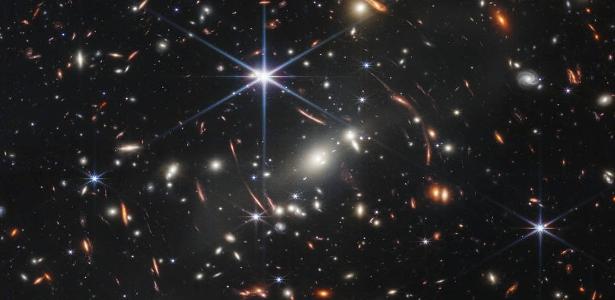A team of Canadian astronomers from the University of Toronto used the James Webb Space Telescope to find the most distant globular clusters ever observed.
Globular clusters are structures made up of thousands or millions of stars and may contain important clues to understanding the evolution of the universe.
They contain some of the oldest known stars and therefore carry important information about the birth of structures in the cosmos.
Our own Milky Way galaxy contains a large number of globular clusters, many of which are over 12 billion years old.
The object named “sparkler” (like birthday candles that release “little stars”) follows the trend. By analyzing the images in different colors, researchers led by Lamiya Mowla and Kartheik Iyer showed that the cluster would be about 4 billion years old at the time it is observed.
Remember that light has traveled over 9 billion years to get here. In other words, the cluster actually formed shortly after the Big Bang.
To find the structure, the team used one of the earliest published images of the SMACS J0723.2-7327 group of galaxies. This group functions as a large cosmic lens, due to its enormous mass and the consequent distortion of spacetime around it. It is this effect that allows for increased brightness and observation of fine detail, such as the detection of individual globular clusters.
With the data in hand, the scientists were then able to model the data, comparing the observed colors with mathematical predictions based on the age of stars in the cluster.
Interestingly, not only is the cluster very old, but it would also have stopped forming new stars rapidly, before the universe was a billion years old. Thus, the “sparkler” would be one of the first known structures to have ceased its stellar formation.
This is only the beginning of a much more ambitious project. So far, the team has only used public data from an image posted by James Webb, but they still have many sightings planned.
They will not only have access to new images, but also to the spectrum of these structures. Spectroscopy is a technique that separates light from celestial bodies, and provides very detailed information about their chemical composition and distance.
With the new observations in hand, the team will then be able to confirm whether this candidate and other new candidates are indeed distant globular clusters and more accurately determine their age.
This would then open a new avenue of study for the formation of the first stars in the universe.

“Pop culture fan. Coffee expert. Bacon nerd. Infuriatingly humble communicator. Friendly gamer.”







